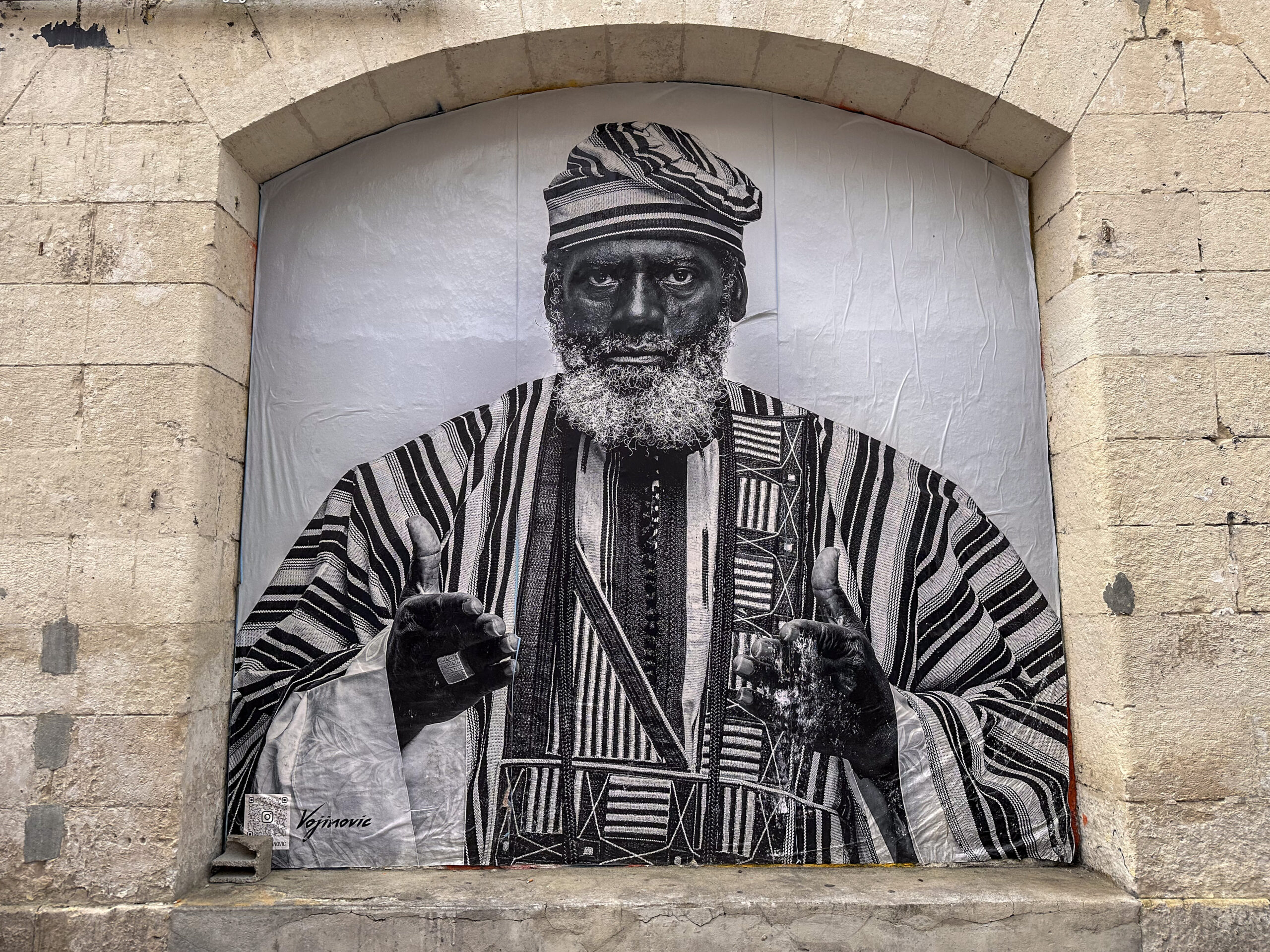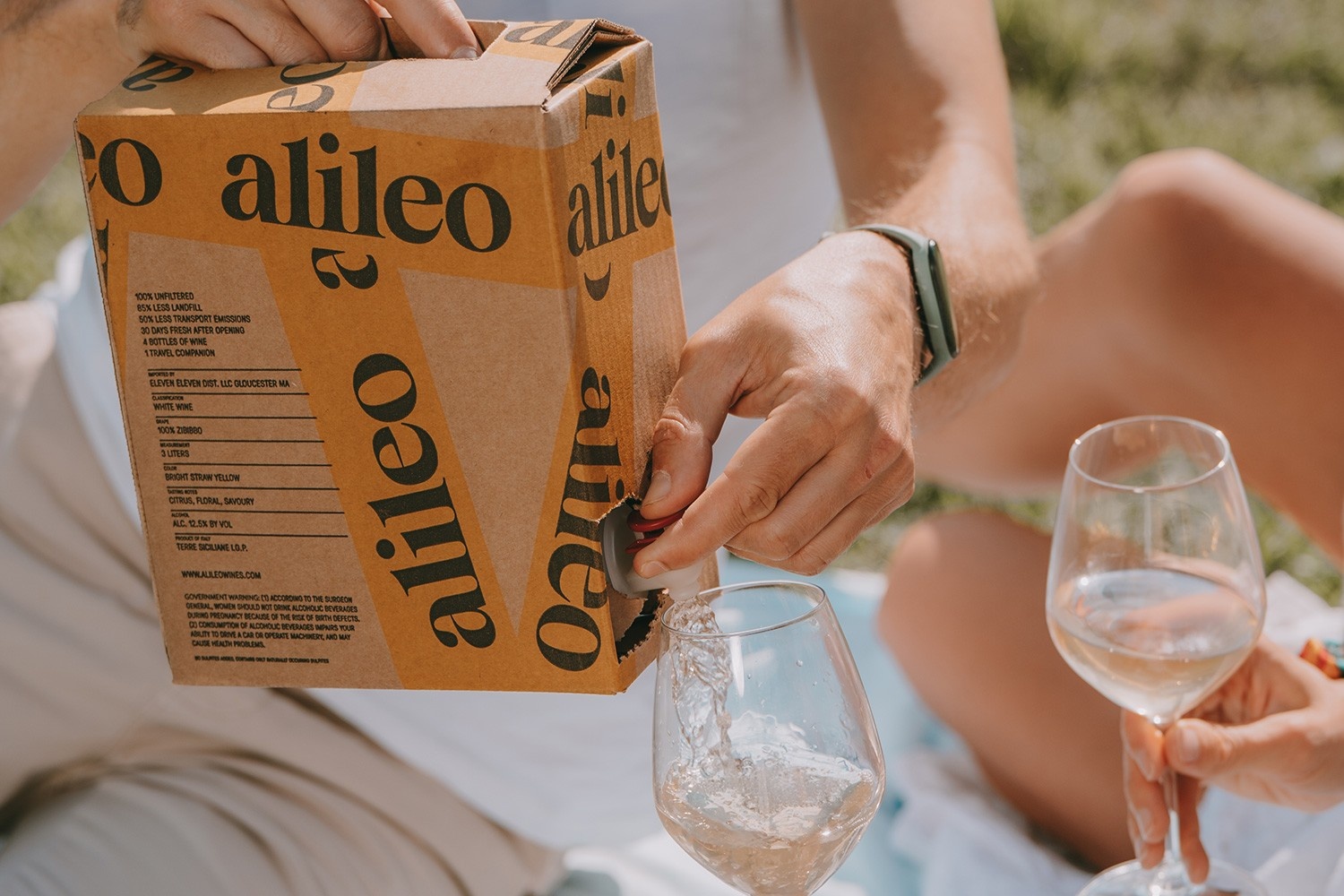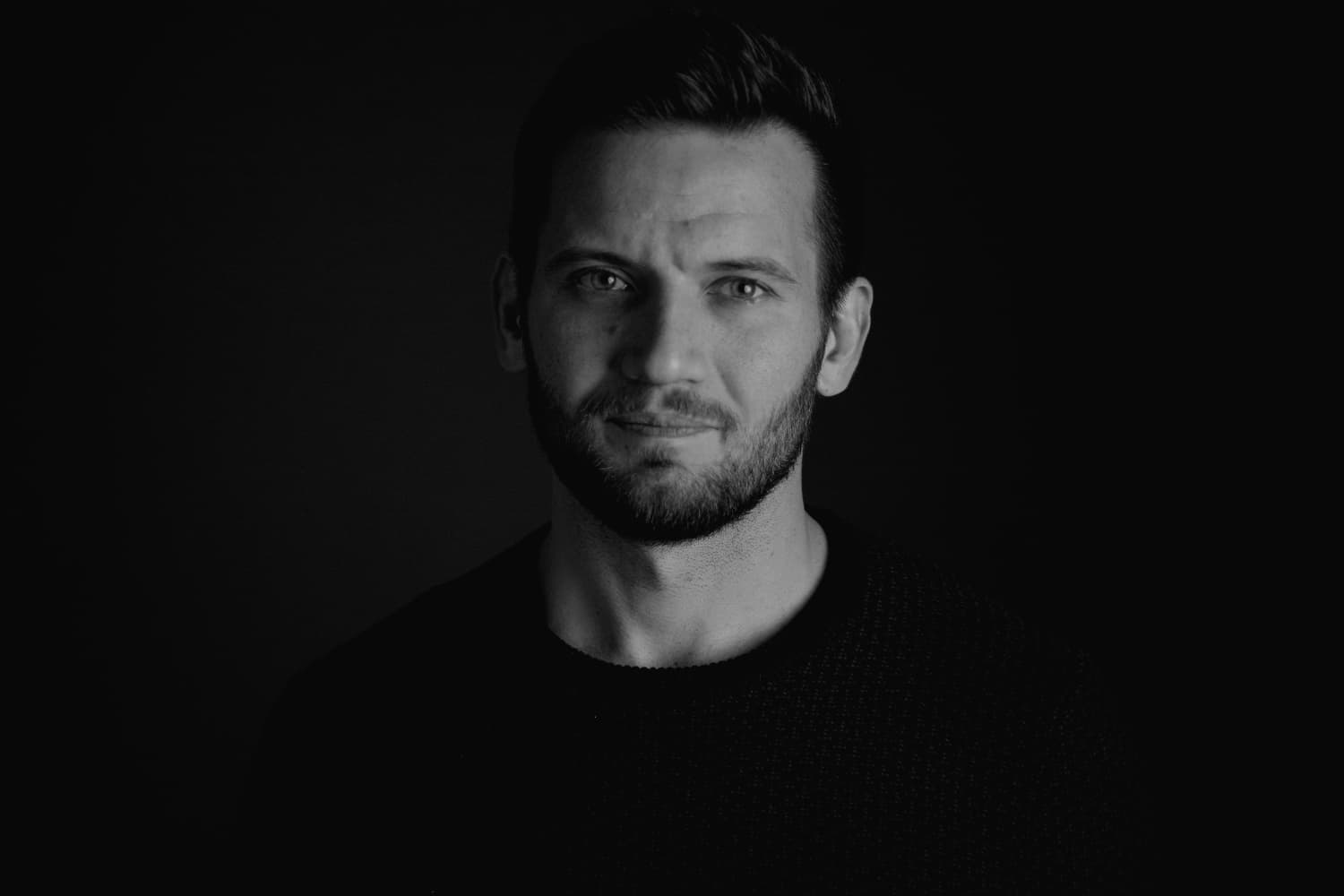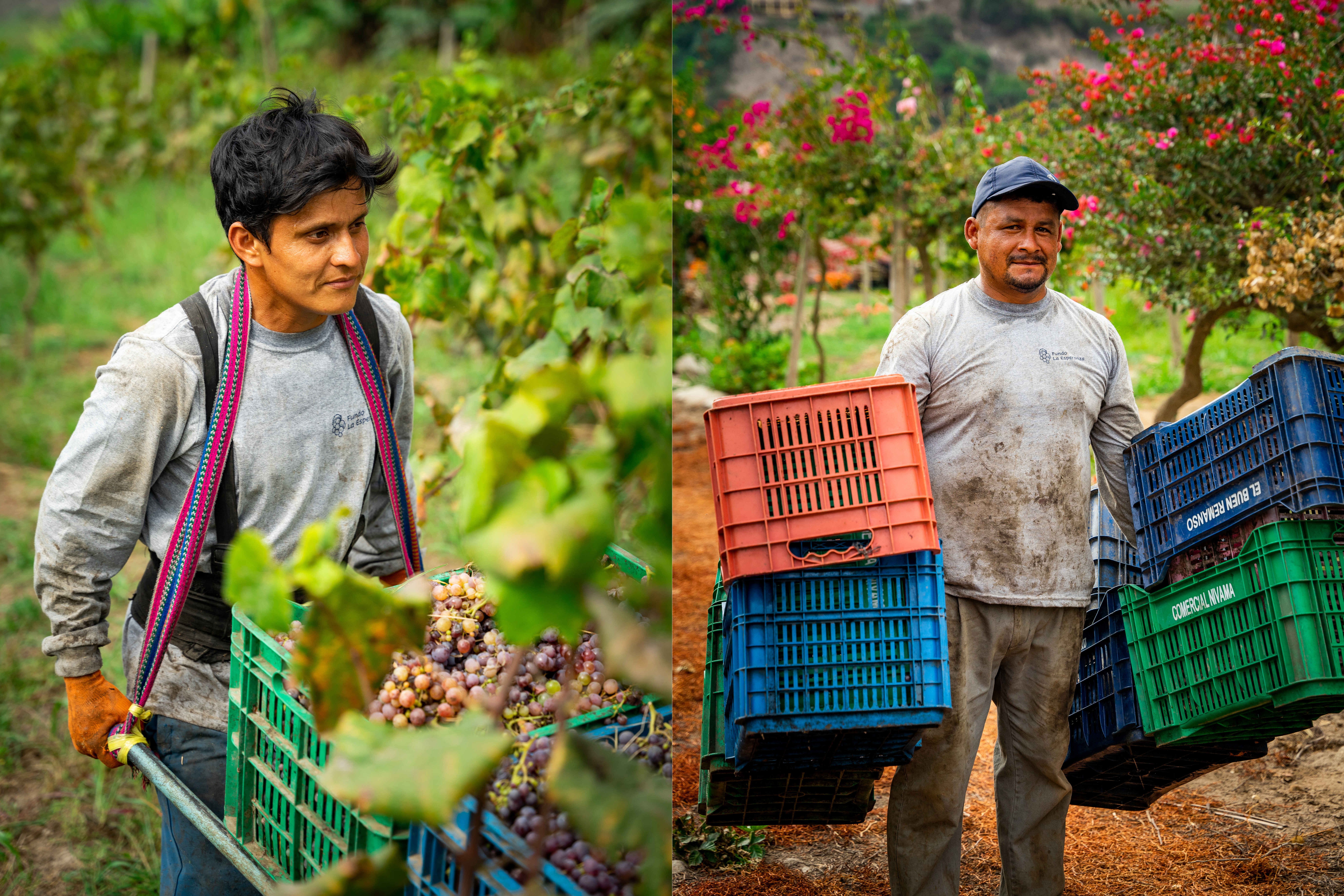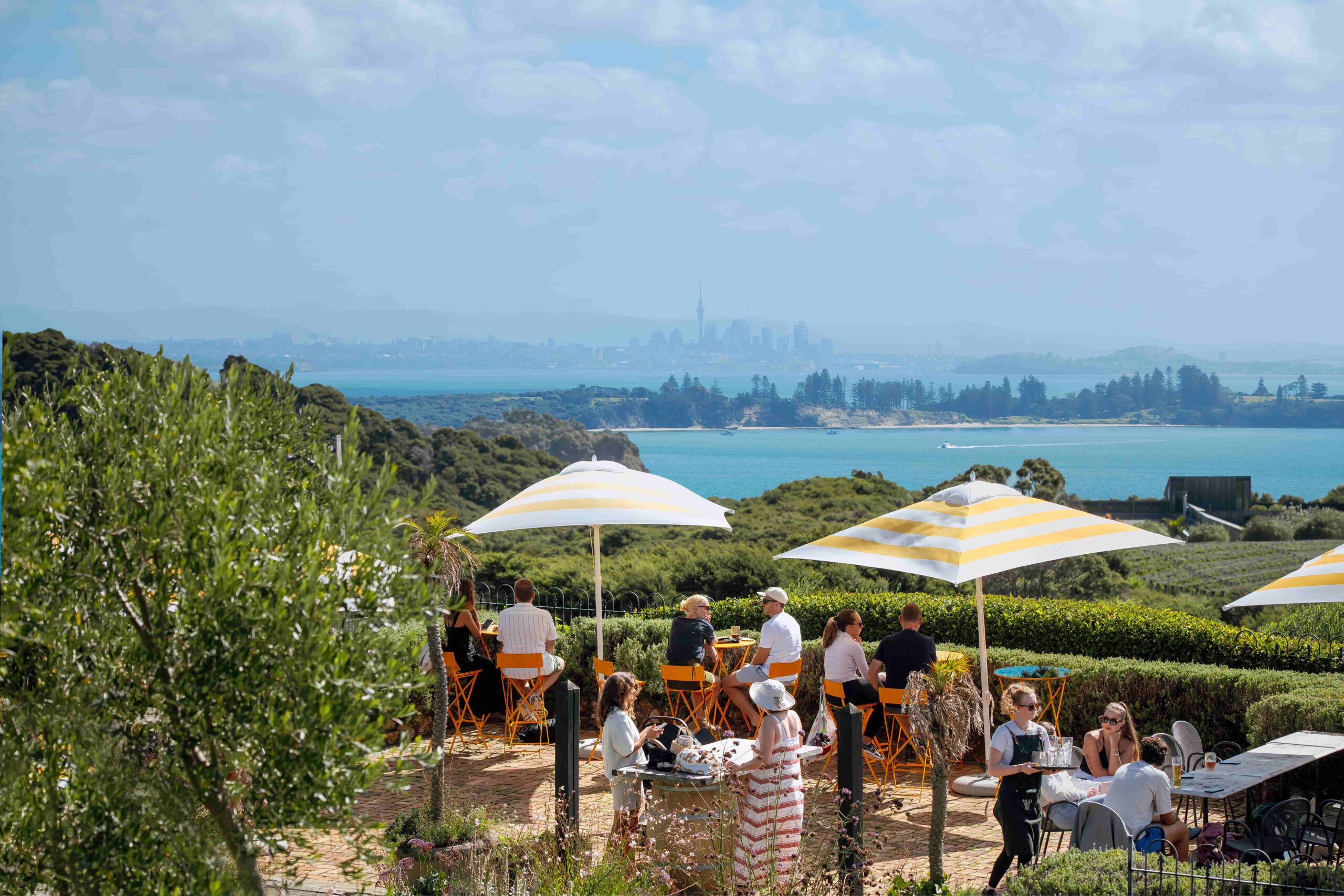“To a kid raised in the Midwest, Bordeaux sparkled across the Atlantic in a glass bubble of aspirational fantasies. It was the place you went after achieving it.”
The spit and crackle of kindling catching fire woke me from a wine and jet lag reverie.
“Oyster?” asked my host, pointing to a silver oval tray in the center of a farmhouse table fit for a dozen. Slick gray globes lay in the remnant of their iridescent homes—half shells nestled in glittering ice. Stéphane rolled up the sleeves of his blue cotton shirt to throw a bundle of twigs into the marble fireplace of a very old, very yellow wall. He squatted to watch them spark. “Once the coals turn red, we’ll grill steaks over the vines” he said, scratching the stubble on his chin. Thin lines at the corners of his gentle eyes scrunched into channels as he studied his progress.
“Vines?” I replied.
“Yes, cuttings from the vineyard. It’s a tradition in Bordeaux to grill our meat over them. It gives a smoky flavor. We use what we have, you know? Like your BBQ and zee applewood” he said with a deep French accent. An upward inflection on “wood” seemed to ask rather than tell.
I set my wine glass on the table, a crisp white blend of Sauvignon Blanc and Sémillon that smelled of herbaceous green things and tasted of lemons and rocks. A specialty of the region, Entre-deux-Mers, and of the house and winery in which I relaxed, Château Sainte Marie. Stéphane Dupuch was the fifth-generation proprietor, former President of the Entre-Deux-Mers Growers’ Association, and the evening’s fireplace grillmaster.
Reaching over the table, I picked up a wet oyster shell, finding purchase on its rough fluting. I looked around for a plate. “Just leave the shell there. We’re not formal, as you can see” said Dupuch, sweeping his arm around the room in a gesture of humility.
Château Sainte-Marie sits in the middle of a prime wine-growing region between the Dordogne and Garonne rivers. The property dates from the second half of the 16th century. The French Ministry of Culture listed it as a historic monument in 1984. However, to the Bordelais, Entre-Deux-Mers lacks the posh zip codes of the Médoc, or Left Bank, where properties like Château Lafite Rothschild, Latour, and Margaux reside and fetch commensurately astronomical prices for their wines. In other words, it’s seen as a modest pastoral place.
Modesty, of course, lies in the eye of the beholder. I grew up in suburban Ohio’s “Heart of it All.” The tract of former farmland our 1970s ranch occupied started down the path of the generic in 1913. A literal flattening of what wasn’t already flat prepped the land for development by The Upper Arlington Company. The town’s founders, brothers King and Ben Thompson, who purchased the original 840 acres from James T. Miller, took inspiration for their idealistic residential community from a country club development in Kansas City. Indeed, they built it and they came—country clubs moved in—as did all of America’s big box brands, chain restaurants, and paved parking lots sixty years later.
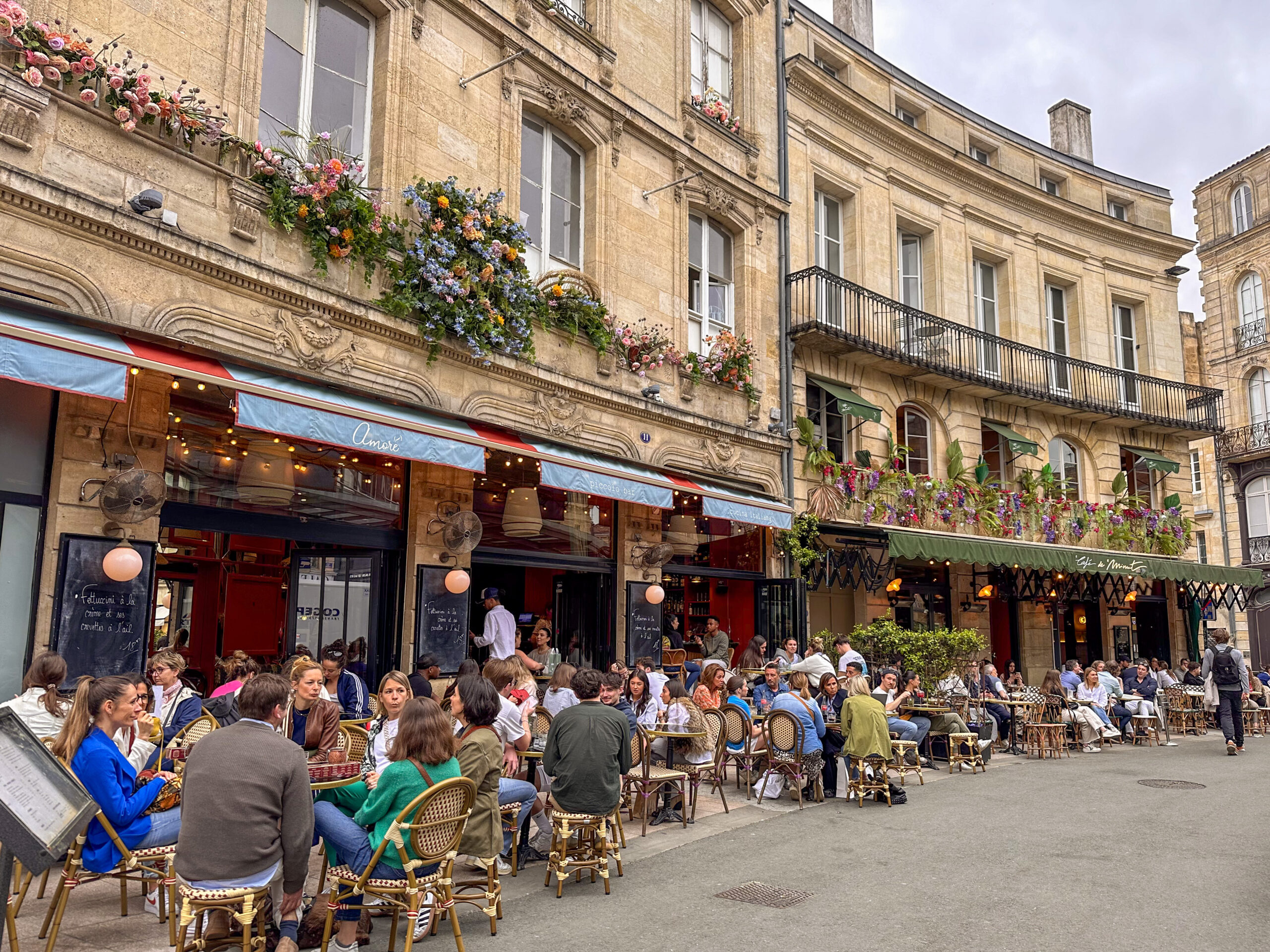
Courtesy of Lauren Mowery.
My family moved in sometime between the demise of hair bands and the rise of Kurt Cobain. Throughout the 90s, we ate a steady diet of processed food sold in cardboard, plastic, and aluminum. Canned green beans, diet Cokes, and Snackwell’s cookies. We embraced the misguided high-carb, no-fat craze. A pint of Wendy’s chili spilled over a baked potato stood in for a healthy lunch. I knew we descended from country farmers, but I’d never seen a vegetable turned from soil. My great-grandmother’s property, a sprawling house in a barren field, no longer produced food.
Around the same time the Thompsons launched Upper Arlington on the path towards Anytown, USA, someone in Bordeaux had the foresight to plant Sémillon vines at Château Sainte-Marie. This act of commitment—vineyards demand decades of patience and care—bestowed the current owners, the Dupuch family, precious century-old material for winemaking.
To a kid raised in the Midwest, Bordeaux sparkled across the Atlantic in a glass bubble of aspirational fantasies. It was the place you went after achieving it all; when the time had come to hire a consultant to fill your wine cellar, rotate through Michelin-star dinners on weeknights, and retire with a glass of luscious Sauternes to an elegant suite in a, well, castle. Bordeaux was for the rich and famous and pedigreed denizens who wore suede loafers and smart jackets over pressed jeans to bistro lunches of frisée salads and bottles of Merlot—or so I thought until meeting the very normal people who call it home.
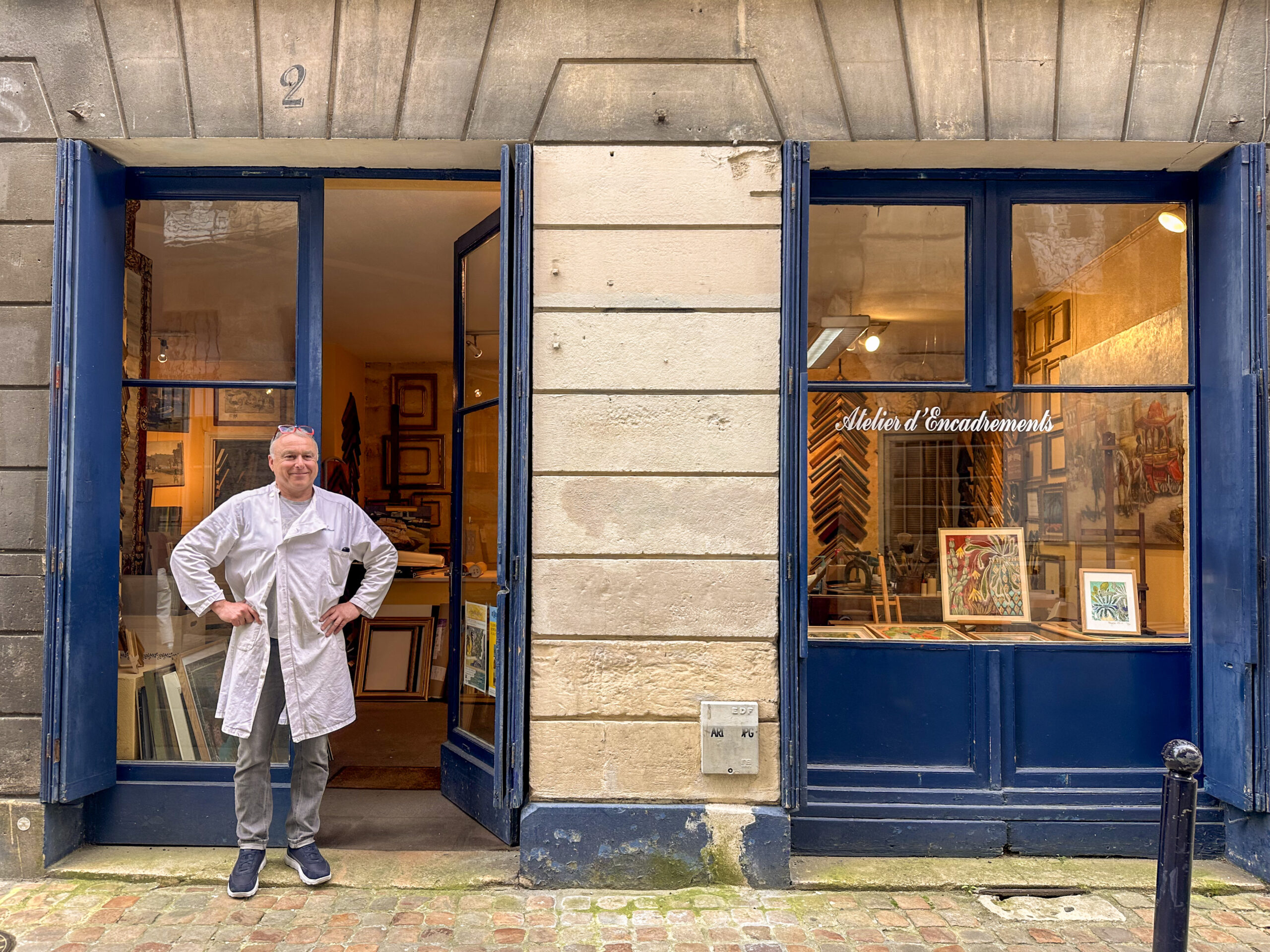
Courtesy of Lauren Mowery.
For grapes were to the Bordelais as corn once was to my great-grandparent’s farm in Circleville. Most wineries survive as simple family businesses—families with kids who need to get to school in the morning, parents who need to get food on the table at night, and in between, figure out how to pay bills by selling bottles in a competitive global market without the prestige of a Grand Cru Classé ranking on the label.
I reflected on this as I slurped the creamy oyster harvested from the nearby Atlantic. “Do your kids eat these?” I asked, remembering Old El Paso taco night around our walnut-stained Ethan Allen table, circa 1990. I never tasted a sloppy Wellfleet or petite and sweet Kumamoto until I moved to New York City.
“Of course. And if you love them, you should visit the Marché des Capucins: it’s the market where everyone, even chefs, shop; and you can eat snacks like oysters and foie gras right from the stalls” he said.
Minutes later, several winemakers burst through an old wooden door at the end of the room, wives and toddlers trailing behind. With bottles from their châteaux tucked into the crook of their elbows, they double kissed one another’s cheeks in greeting.
Stéphane pulled a few more options from the cellar, this time red blends of earthy Cabernet Sauvignon, Merlot, and Cabernet Franc to pair with a dinner of grapevine grilled steaks or Entrecôte Bordelaise aux Sarments topped in caramelized shallots.
We spent several languid hours eating and comparing stories of childhood in France versus America. It was a big, relaxed, neighborly gathering with fresh, local food around a communal table on a Sunday afternoon.
In other words, they were just like us. Sort of.
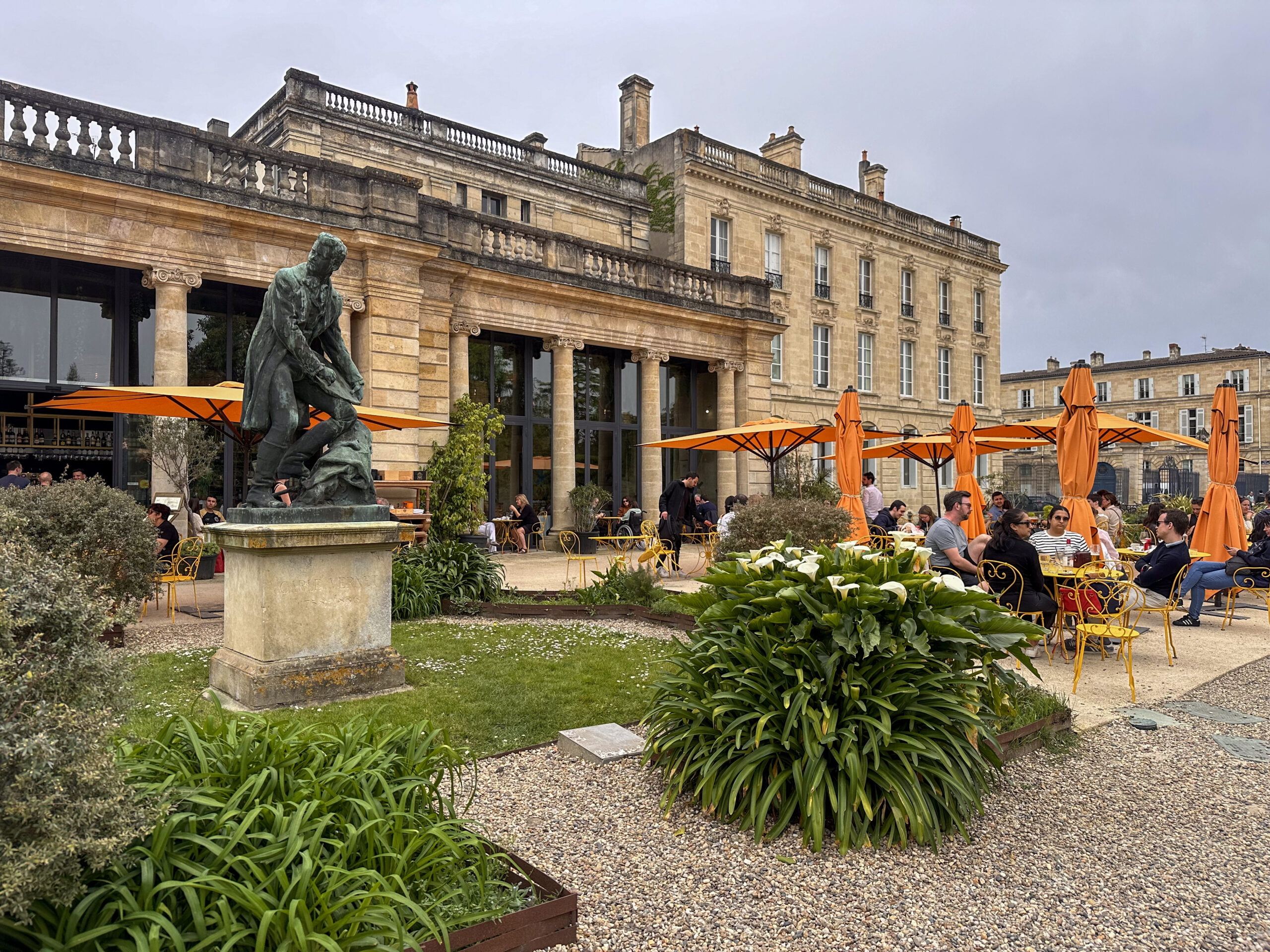
Courtesy of Lauren Mowery.
…
The story of a place has always been shaped by its topography, geology, and climate—and the interpretation of humans as to its strategic and monetary value. Conflicts inevitably ensue; Bordeaux evolved no differently. Yet so manifold, long, and complex is its history, consider this overview a broad sweep.
Defined by its proximity to the Atlantic and potential as a port, the development of this swath of southwest France began during Antiquity. The River Garonne connected the Mediterranean to the Atlantic, a key realization made by early peoples of the Iron Age around 6th century BC.
During the Gallo-Roman period, inhabitants called Bordeaux “Burdigala.” First established by the settlement of Celtic tribe Bituriges Vivisci, excavations revealed they ate, drank, fought, and bred on the site of the Grand Theater in the city center. Falling to Rome around 60 B.C., the Republic expanded the region into a hub for metal trade. Partial to wine, settlers planted the region’s earliest vines.
By the 3rd century AD, Burdigala became the capital of Roman Aquitaine, a modern city of paved streets, baths, and aqueducts. Wine transported in clay vessels known as amphorae supposedly made its way to the goblet of the emperor. Eventually, the Empire fell, unleashing conflict driven by invading Germanic tribes.
Bordeaux’s second golden age began in 1152 when Eleanor of Aquitaine married the future king of England. Her dowry called for the English to rule Bordeaux, an arrangement that lasted three hundred years and cemented the romance between London and the burgeoning wine region. A tax-free trade partnership boosted production and demand for red blends the English called claret.
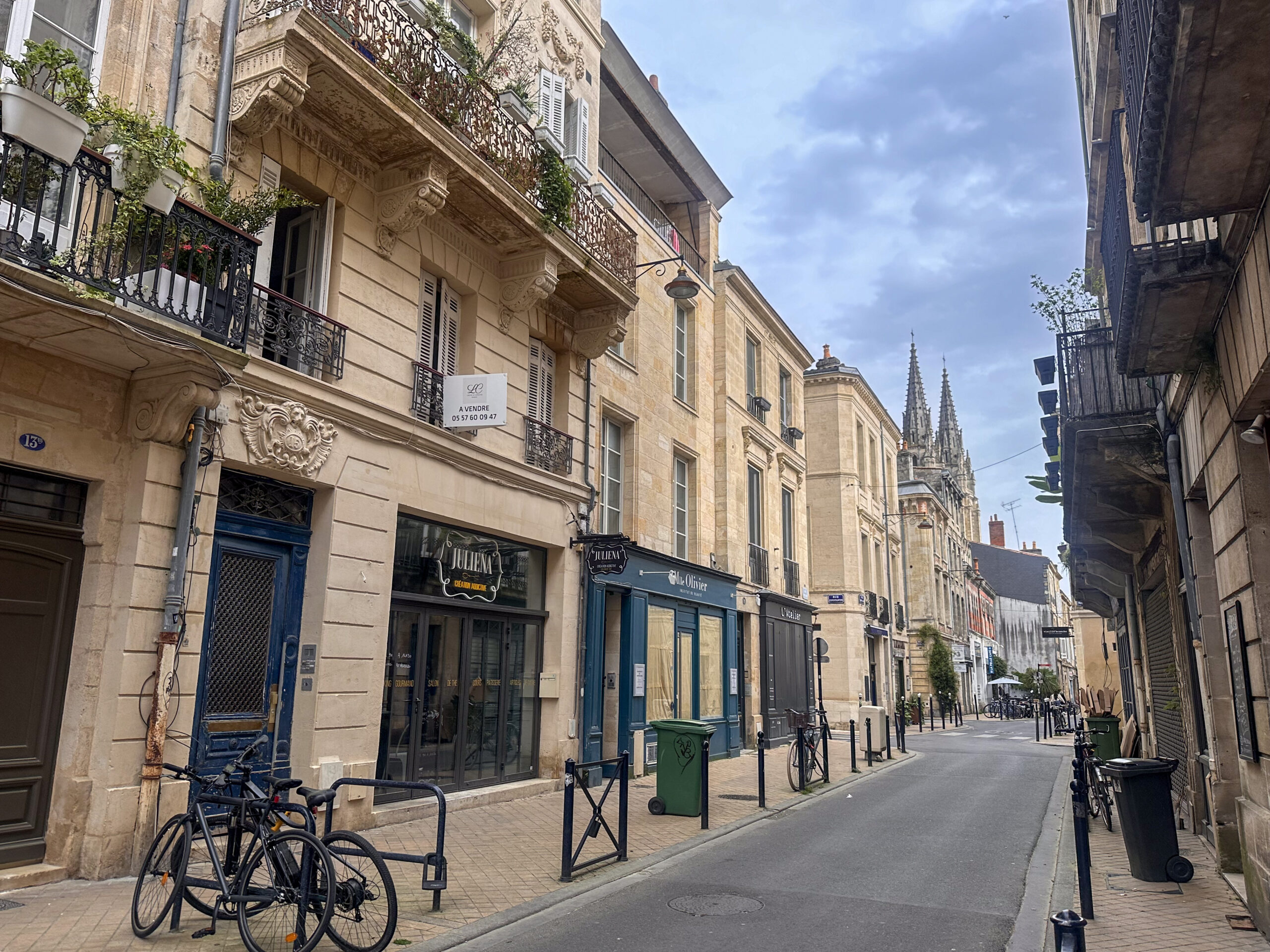
Courtesy of Lauren Mowery.
By the 16th century, the Dutch entered their own Golden Age, becoming Europe’s most prosperous nation and leaders in science and art. While Vermeer and Rembrandt, Old Masters then young, picked up oil paints and brushes, Dutch traders, flush with cash, developed a taste for Bordeaux’s fine wine. What stood in their way to sourcing more? A swamp.
Using techniques developed on the low-lying topography of his home, clever Dutch engineer Jan Adriasssz Leeghwater erected dikes and used pumps to suck aquatic life from the wetlands to reveal a different treasure: gravel soils.
The wine trade rushed to plant vineyards. By the late 1600s, identities developed around the distinct styles of wine the fresh tracts of gritty soil produced. Terroir revealed itself. Appellations were defined. Brands and demand grew. Prices soared.
While there are a thousand stories to tell about the idiosyncrasies of Bordeaux’s wine trade, the most famous vestige of that history is the enduring 1855 classification of estates. This historic ranking, commissioned by Napoleon III for a world’s fair, organized the top Left Bank estates plus properties in Sauternes into five classes, or growths, based on market price fetched at the time. Classified châteaux or Grand Cru Classés (GCC) properties include Château Margaux and Château Latour at the top as first growths. Imagine the envy suffered between châteaux owners, the disappointment to be left out of the top bracket—or left out entirely. The narrative of Bordeaux forevermore turned on prestige.
Classified growths and the elite estates command extraordinary prices—yet account for 3% of regional production. Many are owned by banks and only show their wines to select buyers and influential wine journalists. Consequently, the most common story told about Bordeaux centers around status and exclusivity—high scores, high prices, and scarcity—a niche so competitive, it spawned a rampant fake wine market in China.
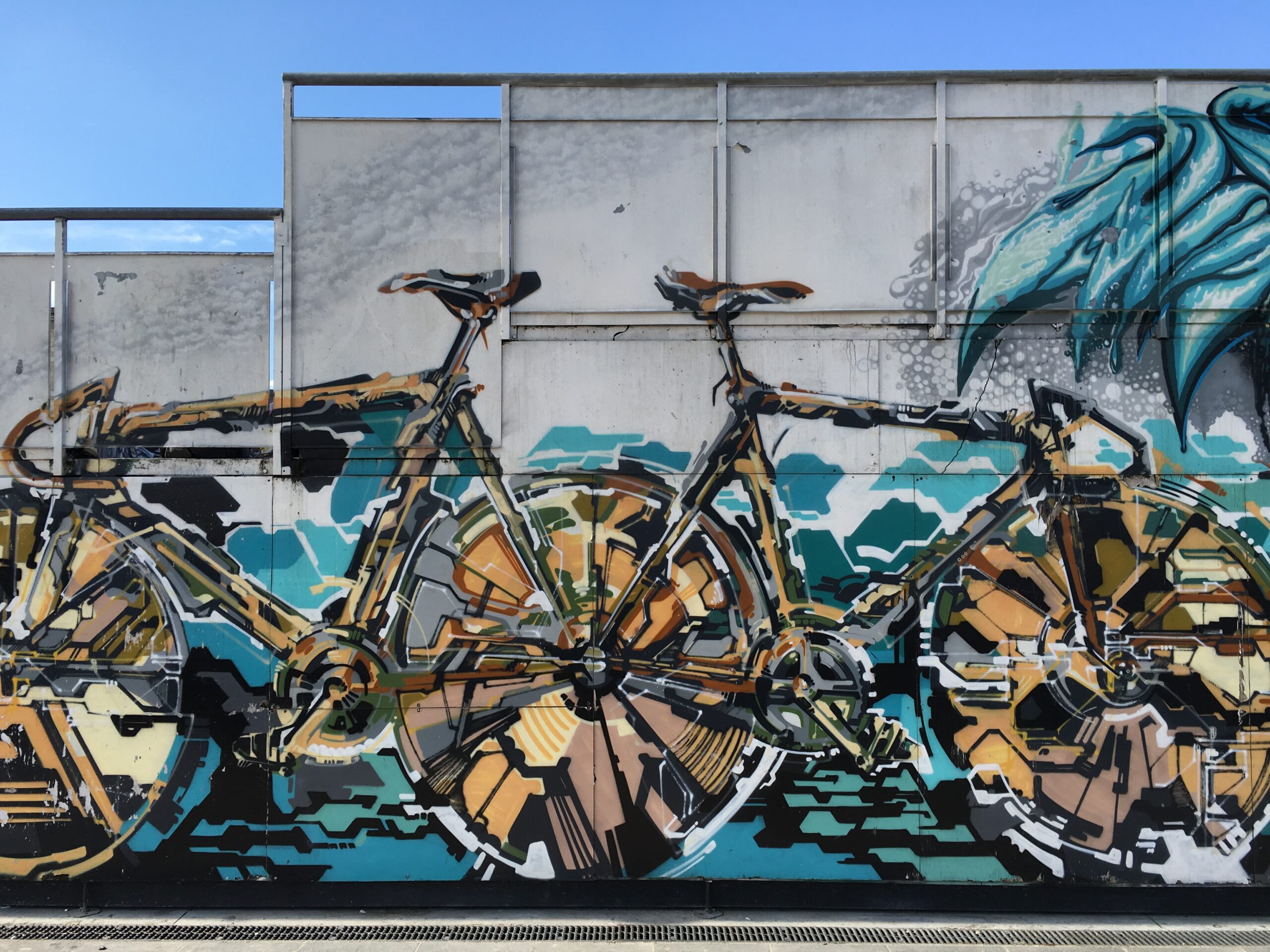
Courtesy of Lauren Mowery.
Two factions helped organize my itinerary: the CIVB, or Le Conseil Interprofessionnel du Vin de Bordeaux, or Bordeaux Wine Bureau. Founded in 1948, the organization represents the interests of producers, growers and negociants. The other: The Institute of Masters of Wine, an educational body based in England akin to a PhD program that certifies Masters of Wine. Only 483 people in the world have earned the title.
As a former lawyer who sat and passed the hardest bar exam in America once, I wrote a Wine Enthusiast piece comparing the hurdles of each program. The question I posed: whether earning a law degree, and with it the right to defend an accused on trial for murder, was harder than passing the three stages of the Master of Wine exams, earning the right to—assess fine wine blind? Wildly different stakes, with a surprising answer.
Nonetheless, I suffered masochist tendencies towards learning, and joined the MW program, availing myself of the Institute’s tour of Bordeaux offered annually to first year candidates. With only a few days to show students the highlights, the Institute started at the top: dinner at Châteaux Margaux.
A silver luxury coach picked nearly forty of us up in front of our hotel. While waiting, I watched peers brandish phones to flaunt selfies at unicorn estates. “Fantastic–you made it to Petrus?” said one unshaven, doughy man with a cravat and British accent.
“Nah. Just wanted a shot in front of the winery for social” said a younger, paler, skinnier Brit (or was that twang South African?) in a somber gray suit.
Students had flown in from around the world, including London, Oslo, Moscow, New York City, Hong Kong, Shanghai, San Francisco, even Cape Town. Most I’d never met; studying for the MW is a largely independent affair. The only contact most students share transpired during the annual weeklong seminar and home in their respective cities. Back in New York, I had a tasting group of six. We met every Monday night for three years (the time it takes to complete law school). At least until the pandemic sent us into the virtual world and put examinations on pause.
Scanning the group, I recognized two faces; I grabbed a seat by a window, preferring scenery over small talk.
Château Margaux embodies the pinnacle of the Margaux appellation or commune. The property holds mythical status in the minds of the wine obsessed, like scoring skybox seats at the Super Bowl for Packers fans. Dinner at Buckingham Palace for anglophiles. A beer with Obama for policy wonks. To read the impressions of fellow wine writers, you’d believe the experience akin to sipping from God’s (he/she/they) personal chalice.
“Margaux and its wines are the stuff of dreams” famed critic Oz Clarke once wrote.
“To these beautiful red wines are attributed fantastical qualities of scent and silk and seduction, a magical ability to be fragile yet intense, immediate yet long-lasting, intellectual yet sybarite” he waxed on.
Such poetry, fresh in mind, raised expectations to Eiffel Tower heights.
The bus turned down a country lane towards the property, dropping us at the start of a long gravel drive. At the end of an allée of Sycamore trees sat the “Versailles of the Médoc.” The sun started to sink, bathing the stately pale-yellow building in an apricot halo.
It looked timeless and, if I’m honest about my thoughts, fucking perfect.
Château Margaux—the building and the brand—has staying power. Its origin traces back to the 1500s, with vineyards developed in the 1600s, wines hitting the Christie’s auction catalog by 1771, and Thomas Jefferson placing overseas orders by 1784. During the French Revolution, owner Elie du Barry lost his head to the guillotine. The estate was confiscated then eventually sold in 1810 to Marquis de la Colonilla who hired architect Louis Combes to build the iconic neo-Palladian villa that framed my present view.
A willowy blonde woman in elegant silk suiting greeted us at the door (frumpy need not apply, merci.) We said hello and filed past her into a formal library to await a pre-dinner tour. A lithe, Esquire-ready waiter slipped a glass of wine in my hand. I took a sniff, lingering in the moment, a pre- and post-Margaux touchstone. I blocked out the commotion for complete mental focus. “Would this glass of wine change my life?” I wondered.
I raised the glass to my lips, the red liquid spilling over the razor thin rim on to my tongue.
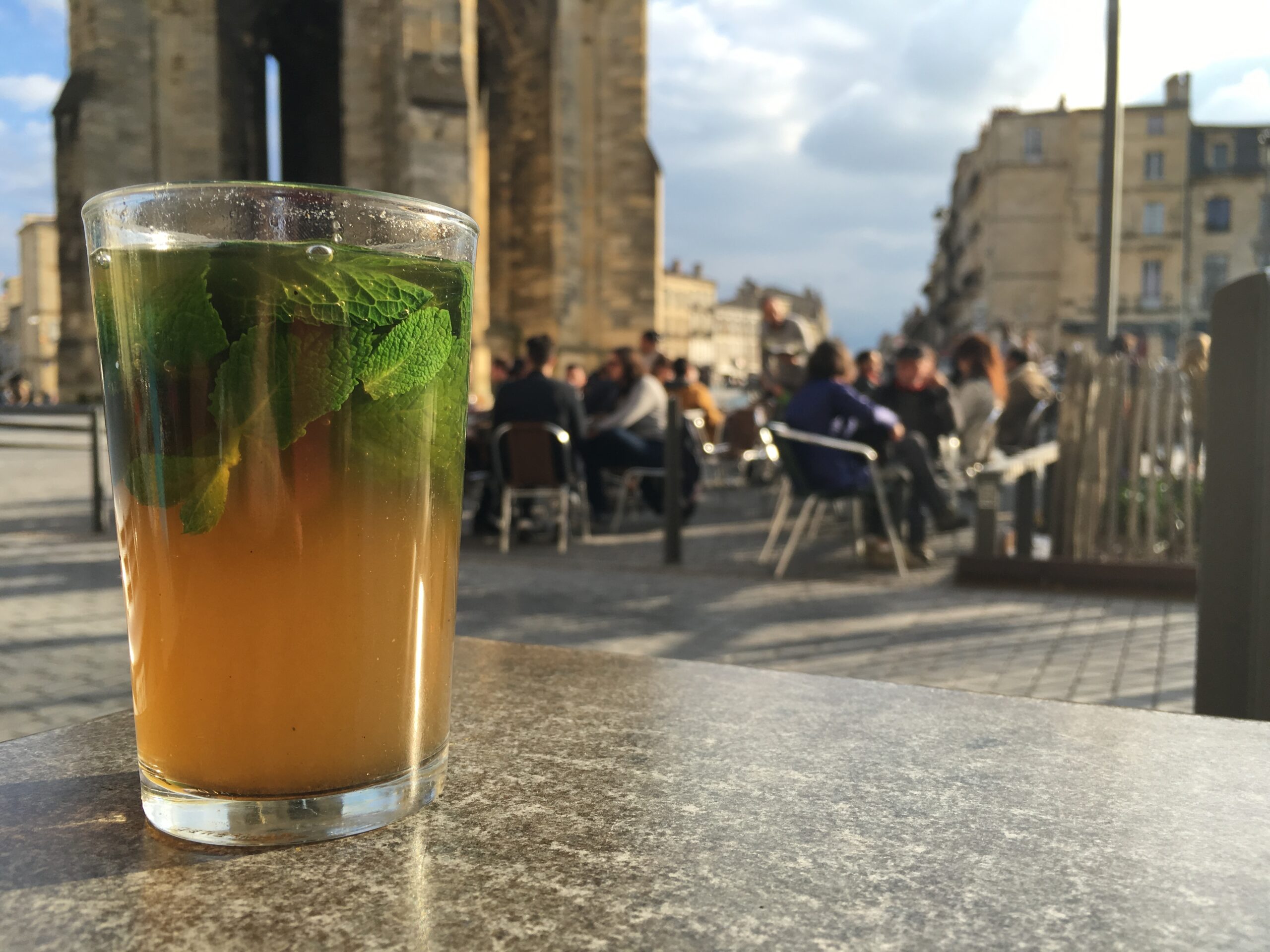
Courtesy of Lauren Mowery.
…
Though my hosts packed my ten-day schedule tight with meetings and tastings, I used respites between winery visits to explore, shoot photos, and follow the scent of a hot baguette, as necessary.
On the hunt for the perfect baton, I discovered a flawless pastry: the canelé. Every region in France has a specialty dessert, and this burnished bite that fit in the palm of my hand became the fixation of each city interlude.
Only a couple euros a piece, I chased as many canelé as I could afford in calories. I craved the crunch of the dark caramelized exterior that sheltered the tender custard center flavored with rum and vanilla. To a lover of wines with shape and contrast, the canelé was a work of art, a study in textures. Who would devote their life to the macaron instead of the canelé, I thought, noting the proliferation of dry meringue cookie peddlers back home in New York City.
Though no historian has verified the cake’s origin story, my preferred plot holds that before the French Revolution, nuns baked these little cakes with the surplus of egg yolks donated by winemakers who fined their wines with the whites.
Like wine, the canelé of each pâtisser bears the fingerprint of its maker. A milky batter poured into a fluted copper mold is where similarities end. At one shop, the thick lacquered exterior cracked with the first bite, revealing a silky custard marked by tiny air pockets. Another went for a burnt-sugar exterior so dark it tasted savory. A third dabbled in flavors like cardamom, chocolate, and orange.
Though I spent an inordinate amount of time on the minutiae of pastries, I spent even more time dazzled by the palimpsest of Bordeaux’s culture and architecture.
On my first night without a dinner obligation, I went for a wander in the center of downtown, taking advantage of the well-positioned Hôtel de Sèze.
Within a few steps, I encountered charming cobblestone streets, grand Corinthian-style columns, and intricate building facades, all lit up like a Broadway stage. I stood in the neoclassical heart of the city—ancient Burdigala—marveling with the fresh eyes of a foreigner savoring the honeymoon stage of a new place.
Three boulevards formed the sides of this “Golden Triangle:” Cours Georges Clemenceau, Cours de l’Intendance, and perhaps loveliest of all, Allées de Tourny. A stroll past the illuminated Grand Théâtre de Bordeaux transported me to the era of its 18th century unveiling. The noisy clack and whoosh of skateboarders practicing tricks under the moonlight, jarred me back to the present.
I met Bordeaux after a profound makeover. According to locals, however, the weight of all its historical grandeur had pressed the centuries-old epicenter of French wine commerce into a static state. Heavy soot, adhered to limestone facades in a symbolic blackout curtain, had lulled “La Belle Endormie,” or Sleeping Beauty as they called it, to sleep.
The reimagining of Bordeaux began a decade ago with a renewal program initiated by mayor Alain Juppé. He executed an ambitious plan to power wash the grime off every building and restore landmark architecture, an effort that turned Bordeaux into the largest UNESCO World Heritage site in the world. He added a sleek, whisper-quiet tramway system and gentrified neighborhoods.
The perception of Bordeaux as a stuffy, staid relic dissolved with a literal cleansing. The generation of Bordelais who fled their hometown for livelier Paris or parts overseas, have been lured back to shake La Belle Endormie awake. They brought fresh ideas to the vineyards, restaurants, and the arts, intending to shape Bordeaux into one of Europe’s most vibrant cities. Even the young skateboarders near the historic theater weren’t a fluke: the Bordeaux skatepark along the waterfront is one of the largest in France.
To see more of its growing urban side, I plotted a route to an old military complex called Darwin. The following day, I crossed the river on foot. I took the pedestrian path on the newest architectural bridge over the Garonne, Le Pont Jacques Chaban Delmas.
Darwin housed an indoor skate park, roller derby ring, urban farm, free expression spaces for graffiti artists, and organic grocery and restaurant. It was a gritty, enterprising, and sustainable foil to the cultivated sophistication of the city center across the river.
I had another reason for the trip. As a fervent coffee writer frustrated with the abysmal state of French caffeine, I planned a meeting with the city’s first specialty coffee roaster, Arthur Audibert. He had established a roastery, L’Alchimiste, inside the derelict barracks.
I first learned of L’Alchimiste (The Alchemist) while cupping coffee on a volcano in Panama. Cupping, like tasting wine, involves quality and sensorial analysis. Q graders, the MWs of coffee, give a score which helps importers and roasters decide which beans to buy. I was in Boquete on assignment for USA Today to cover the history of Panamanian Geisha, the most expensive coffee sold at auction in the world. I had spent the day cupping samples with the two top farms growing these rare beans, Elida Estate and La Esmeralda.
While slurping from a tasting spoon alongside Wilford Lamastus, Sr., owner and patriarch of Elida Estate, a fit, 30-something white guy in a leather necklace strolled through the door. Overhearing his accent during a sidebar with Wilford, I spoke up.
“Excuse me. You sound American. Did I get that right? What are you doing here?” I asked.
“I could ask the same of you. Are you a buyer or a journalist?” he replied.
We got to talking, as Americans who encounter one another in odd surroundings do. Jamison Savage had quit his finance job to uproot his wife and kids from Florida to establish a farm around the corner from Elida. He wanted to grow Geisha organically on a high elevation site. Also, he loved wine and had just returned from Bordeaux. I mentioned my upcoming trip.
“You have to find Arthur Audibert. It’s the only place for specialty beans in the entire city” he urged me.
Savage connected us by email, and a few weeks later I shared cheek kisses with Audibert. Over a full-circle moment sipping an American’s Panamanian coffee in France, Audibert shared his story as a corporate refugee turned de facto leader of Bordeaux’s specialty coffee industry.
“I wondered how I could improve coffee quality in a country where people already embraced gastronomy. Bordeaux is an important wine city; its people were already sensitive to the tasting experience. And as you know, wine and coffee have a lot of similar aromatic compounds” he explained.
Over the week, I met others like him—young professionals or even older veterans in industries they’d tired of, ready to take on passionate pursuits in a smaller, more manageable city like Bordeaux. They shared a fervor for “making something out of their one opportunity at life,” they said.
I got it. As a former lawyer, I lived it.
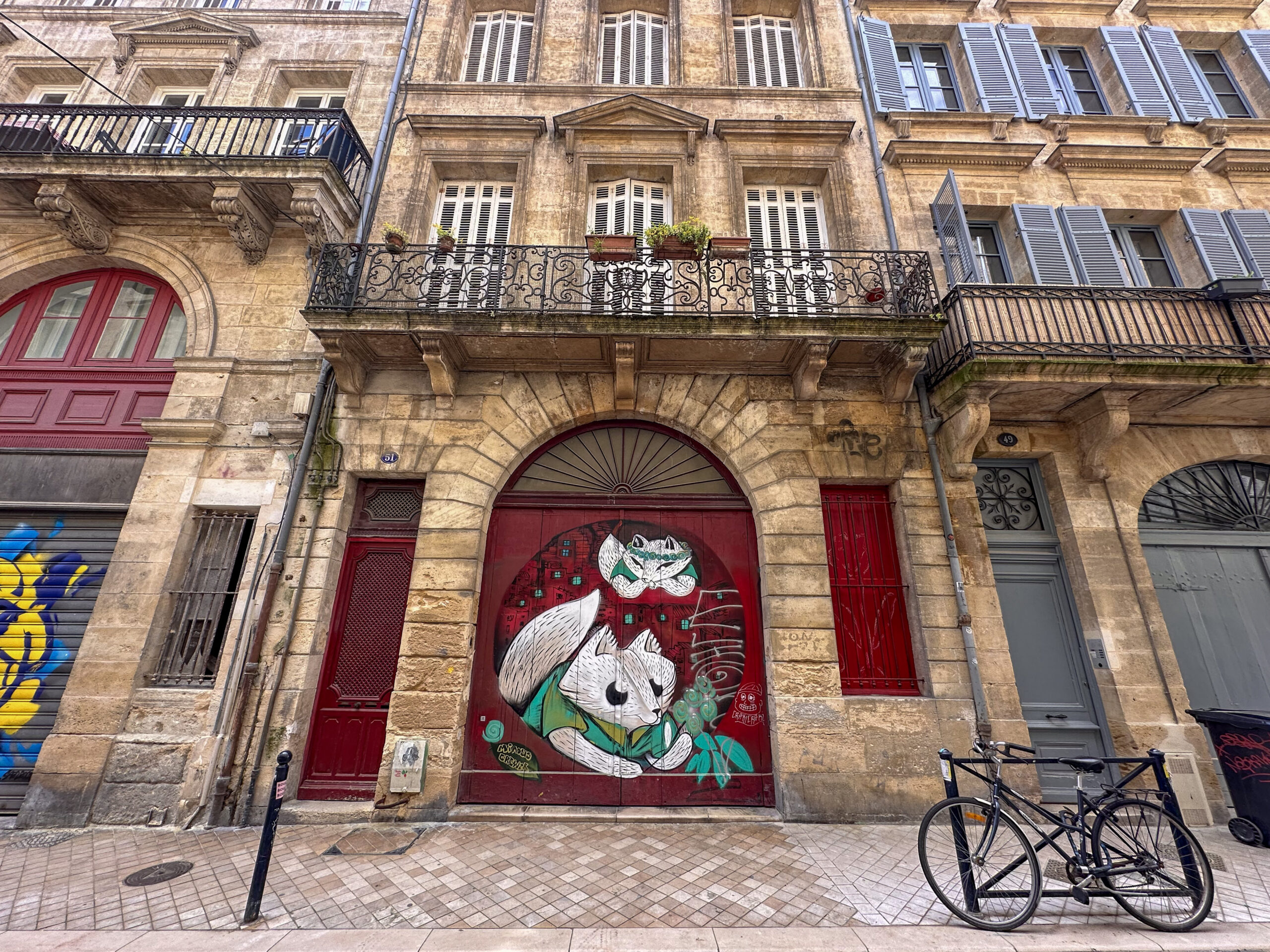
Courtesy of Lauren Mowery.
I spent my final day in the city dragging a heavy DSLR and lenses around to shoot street scenes for a magazine. Following colorful political graffiti down an alley, I meandered inadvertently towards the immigrant quarter around Place Saint-Michel.
In the center sat the city’s tallest building, the 15th century Basilica of Saint-Michel with its tower tapering into an ornate spire towards the firmament. Tasked with the impossible, I circled the masterpiece of Gothic Flamboyant style for the right angle. I wanted to digitize the sense of movement conveyed by its exuberant curves, twisting lines, and ornate tracery. Lay it flat on two dimensions. A better idea, I concluded, was to put the camera away and enjoy the view with a drink.
North African tea shops ringed the square. Surveying the options, I caught the glance of a café owner. His warm, broad smile, an anomaly between strangers in France, drew me over. French girls in leather jackets smoked and chatted at one of his bistro tables. Between puffs, they sipped from traditional Moroccan glasses embellished with gold swirls. Each drink had a fresh sprig of mint curled over the lip. He directed me to an open table, so I acquiesced, sunk into a seat, and pointed.
“One of those, s’il vous plait, merci beaucoup.”
The sun started to drop. From a window above, a tinny radio blared French pop. Across the square, an older woman with gray curls piled atop her head, leaned on a wrought iron balcony. Her eyes scanned the scene below with tender satisfaction. Tightening her crimson bathrobe, she turned and disappeared into the dark; a moment later, she resumed her perch with a glass of red wine. For the sunset, I presumed, imagining the decades of social and political change observed from her third-story position.
The tea arrived. I traded two euros for it and took a taste. Essence of menthol cut the sweetness of the sugar cube dissolving at the bottom. I liked the contrast between tannins and herbal freshness—as well as finding something delicious to drink besides alcohol.
With a deep breath, I slipped into solitary stillness. Finally, a moment to just sit, watch, and reflect. These trips required hours of talking, interviewing, and collecting, whether information or photos. Out of habit, I flicked on my Canon to review the day’s shots. The screen lit up with a hot pink bicycle leaning against a weathered gray building.
Pulling out my pen and notebook, I jotted a few impressions while fresh. Mostly comparisons between the day-to-day in Bordeaux and other cities I knew intimately. I sensed something special afoot in la belle endormie, a fresh page of possibilities laid atop thousands of years of conclusions.
It was this synergy between old and new, a visible complicated history commingling with palpable youthful energy, that turned ambling down little lanes into an urban scavenger hunt for the unexpected; the way exploring New York City’s oldest neighborhoods felt before chain stores and banks bumped out small businesses.
The inevitable happened: I imagined a life in Bordeaux, maybe a city apartment or a country manor with a few vines out back. Both possibilities cost a fraction of East Coast real estate.
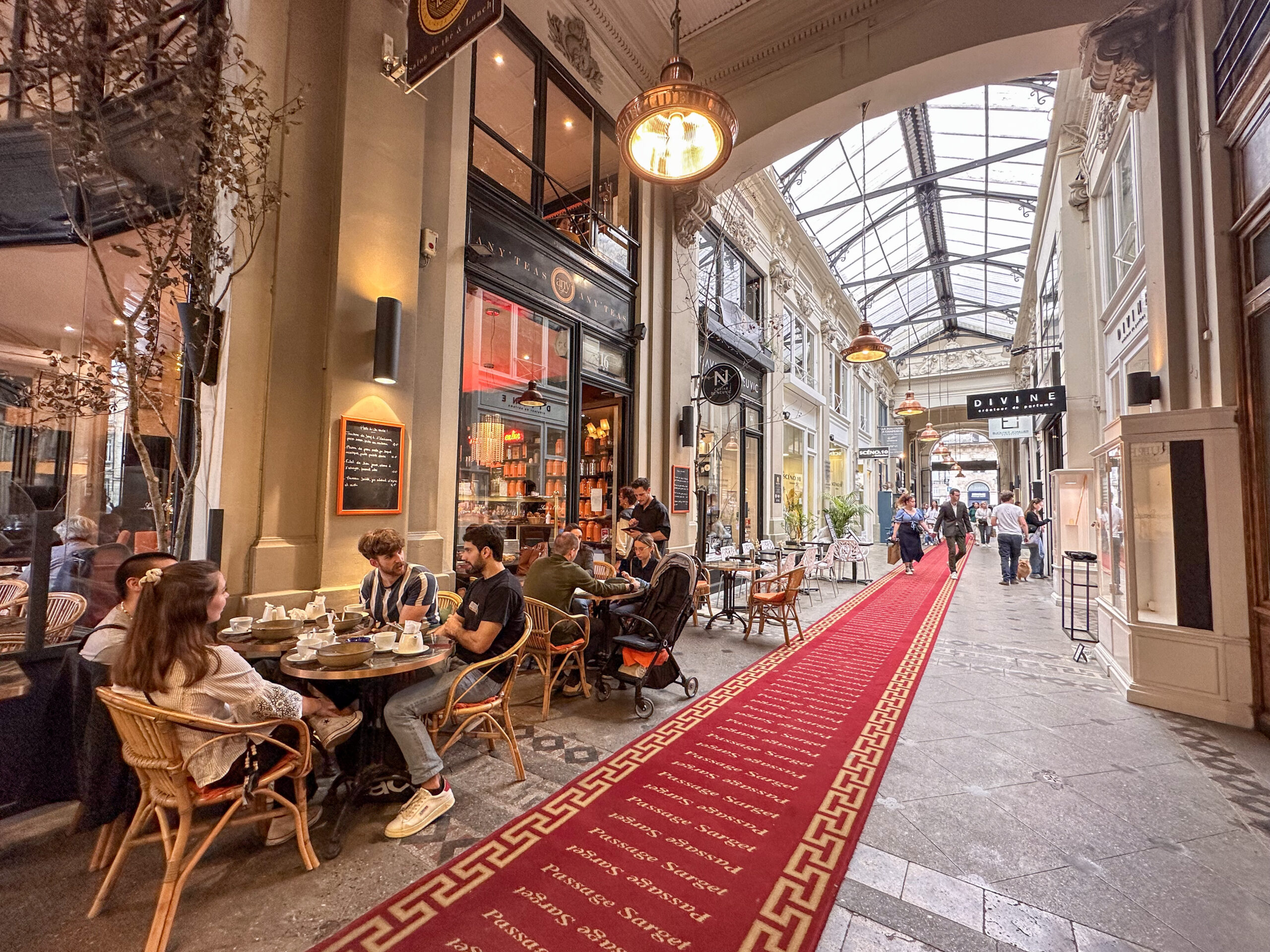
Courtesy of Lauren Mowery.
The Bordeaux Wine Bureau arranged a full day of tastings for the last day of my trip. At 9 AM, a black sedan pulled up to the hotel.
“Good Morning Madame. My name is Jacques. I have your schedule” said the driver. His pate gleaned in the sun as he bent down to transfer my bags to the trunk. I was moving to a different property in the countryside for the night.
We traced the route back to Château Margaux but turned off towards the river instead. A small motorboat awaited on its muddy bank. Wearing a blue jacket, scarf, and tan pants, a young man with a smooth face and floppy hair extended a hand to help me in.
“Bonjour. I’m Pierre Favarel” he said. I waited to ask questions until we landed on the opposite bank. Jumping out to tie off the boat, Pierre offered his aid again and I accepted, stepping on to a steel pier.
“What a gorgeous house” I said, surveying the two-story building of butter-hued stone. Maroon shutters framed classic French doors in white wood. Matching windows curled around the sides suggesting the builder’s appreciation for symmetry and natural light.
Lush, unruly grass grew to the edge of the foundation; behind the edifice, a field of yellow rapeseed formed a block of color. On the limbs of a wide, old tree, tender buds emerged–shade come summer for the repurposed wine barrel tables and chairs beneath it.
Everywhere, spring’s ebullience was on display, the land kempt enough to establish order but otherwise let pollinators do their work. Organic farming was hard, but beautiful, I thought.
Pierre caught my knowing smile and started to explain. The house and vineyard, called Domaine de l’Ile Margaux, occupied an island in the Gironde Estuary. Part of the commune of Margaux, “L’île Margaux” had been planted with vines since the 18th century, its vineyards once an extension of Château Margaux.
After a storm flooded the island in 1999, all was thought lost until Pierre’s father, Gérard Favarel, bought the property in 2001. Slowly, the family restored the land with an eye to preserving its unique ecosystem.
After we walked through the Cabernet Sauvignon vines, Pierre invited me inside.
“Do you eat foie gras?” he asked.
“When in Rome, er, Bordeaux” I responded. A stupid, stupid joke but he chuckled with grace.
We sat down near the window. Curtains of aged lace cast a lattice of light on the table. I ran my hand through the dappled illusion. Pierre stepped from the room, returning with a glass jar. “My mother makes this” he said, pointing to the yellow-crusted lump inside. As homemade a lobe as I’d ever seen, it looked like an embalmed organ, which, I guess it technically was.
He dumped the clay-like ball on to a wooden cutting board. As it tumbled out, the smell triggered a distant memory.
For occasional weeknight reprieves from cooking, my parents took us to a cafeteria called MCL; it was wedged between a Limited and Express in a now vacant mall. Little assholes that we were, we nicknamed it Medicare Lounge for the older folks who flocked at 4 PM to affordable meat-and-potatoes fare. Somehow as a 12-year-old, I developed a taste for the restaurant’s grizzled liver slathered in oily onions, finding the funky flavor and spongy texture oddly appealing.
Pierre sliced a thick slab off the lobe, and smeared it across fresh-cut baguette, inviting me to do the same. Following his lead, I took a bite. The foie melted into the warmth of my mouth with the unctuous meaty richness only fatty offal conveys. It was nothing and everything like the liver of my childhood.
We sampled a few bottles of red blends which I quietly compared to the wines at Châteaux Margaux. They floated in separate planes. Pierre’s wines tasted honest and earnest, a touch rustic like the property, though free of pretense and full of possibility. Pierre knew this. He explained that each vintage remained a work-in-progress; he lived in Paris with his wife and young children and had to make frequent visits to watch over the place.
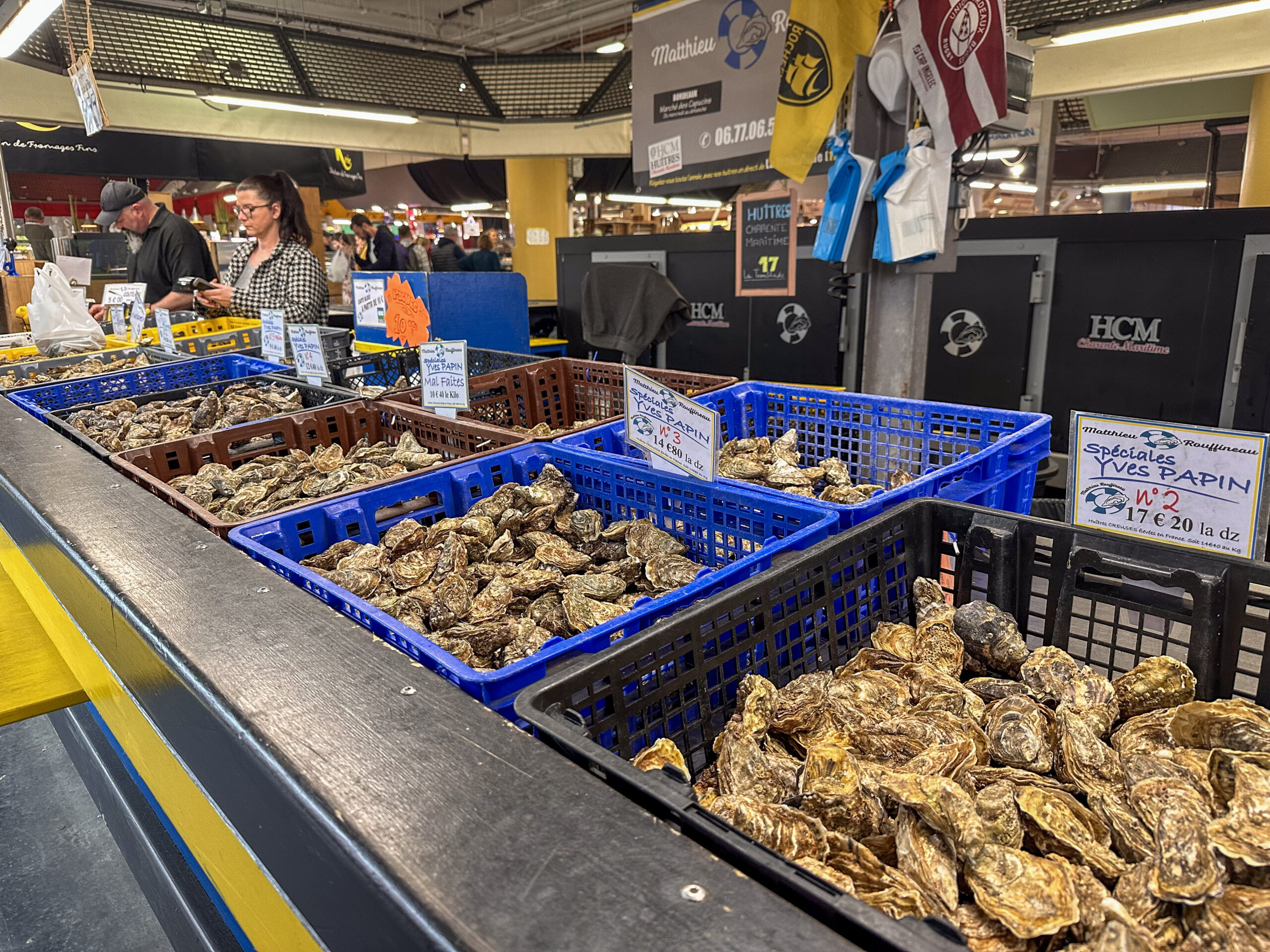
Courtesy of Lauren Mowery.
“Can anyone who wants, come visit?” I asked, thinking about the gatekeepers at Grand Cru Classé properties rationing or eschewing consumer appointments. Tourists who can’t get a limb through a door might buy wine instead. However, a fifth Growth starts around $150, while First Growths reach for the stars. One bottle of Château Margaux 2005 runs $1400; the property’s second label, Pavillon Rouge, fetches $250.
“Of course! I would love to welcome guests. They only need to call or email me to set up a time” he said.
I thanked Pierre for his hospitality and our brief communion over his wines. Then we crossed the river with his boat to meet Jacques who waited with the car. The afternoon schedule, Jacques informed me, would end where the trip began: Entre-deux-Mers.
The name translates to “between two seas.” Hemmed in by rivers—the Garonne and Dordogne, which form the area’s southern and northern boundaries respectively—the term references ocean-like conditions created when lunar tides push swells from the Atlantic up the Dordogne River. These forces create an unusual phenomenon called a tidal bore, or a surfable wave locals nicknamed the “The Mascaret.”
Through the window of the car, I counted the number of kayaks, surf, and SUP boards drying against ancient exterior walls. Modern sports equipment belonging to whatever family lived, loved, and fought inside. This mundane observation told a narrative, the truth of which revealed itself with each subsequent visit to this southwestern corner of France.
Small producers comprise the genuine fibers of the region’s intricate weave. Many live in Entre-Deux-Mers, Bourg, Blaye, and the Côtes, a quartet of regions in a hilly area of the Right Bank. While the lack of name-brand dirt limits the prices they command for bottles, these producers have a different asset of value: freedom. Freedom to make authentic, affordable wines evocative of place. Freedom to welcome guests into their homes to sit and share a thing of beauty, unfettered from money or pageantry.
Of course, some go to Bordeaux for extravagance. The Michelin star meals, rare vintages, presidential suites, and coveted tastings. For the rest, the salve of travel in a post-pandemic world is authenticity and normalcy—even if it’s someone else’s normal. An old limestone house, a tray of fresh oysters, a fireplace to cook thick steaks, and a glass of wine made from grapes grown down the hill. Because the thing is: money buys experiences but the best ones in Bordeaux cost only a phone call, a bisou or two on the cheek, and time.
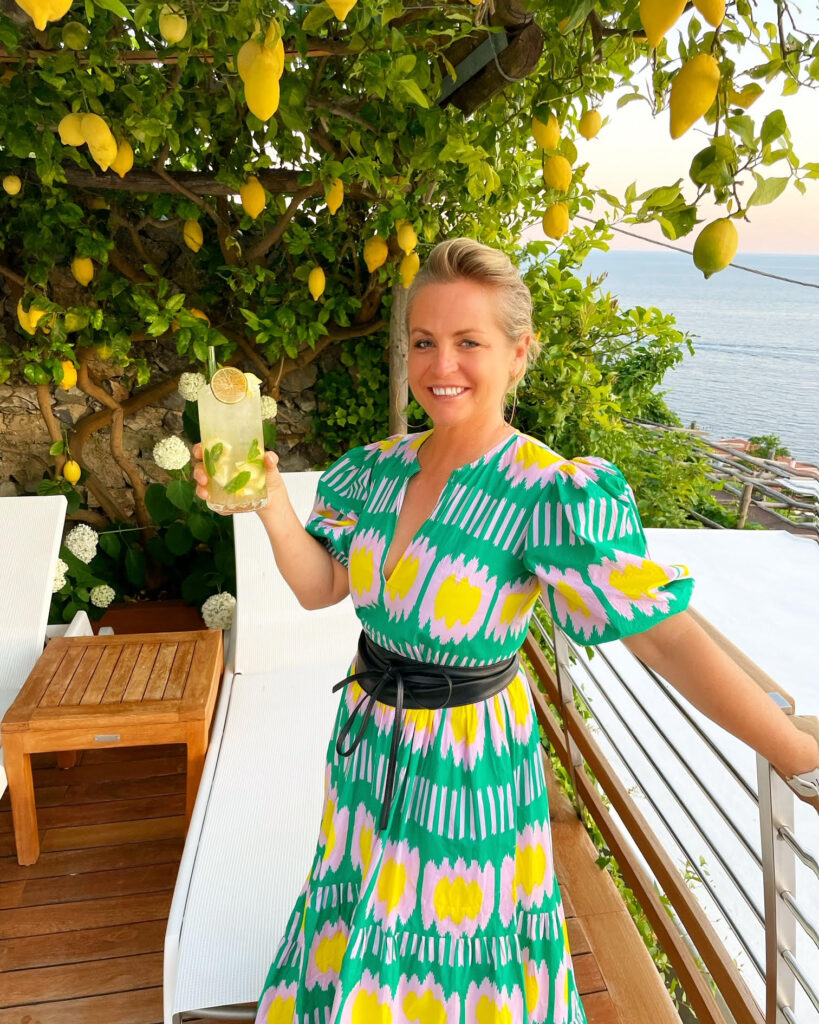
Founder and CEO of Azure Road, Lauren Mowery is a longtime wine, food, and travel writer. Mowery continues to serve on Decanter Magazine’s 12-strong US editorial team. Prior to joining Decanter, she spent five years as the travel editor at Wine Enthusiast. Mowery has earned accolades for her writing and photography, having contributed travel, drinks, food, and sustainability content to publications like Food & Wine, Forbes, Afar, The Independent, Saveur, Hemispheres, U.S. News & World Report, SCUBA Diving, Plate, Chef & Restaurant, Hotels Above Par, AAA, Fodors.com, Lonely Planet, USA Today, Men’s Journal, and Time Out, among others.
Pursuing her Master of Wine certification, she has also been a regular wine and spirits writer for Tasting Panel, Somm Journal, VinePair, Punch, and SevenFifty Daily. Mowery is a graduate of the University of Virginia and Fordham Law School, and she completed two wine harvests in South Africa.
Follow her on Instagram @AzureRoad and TikTok @AzureRoad


